2010 Projects


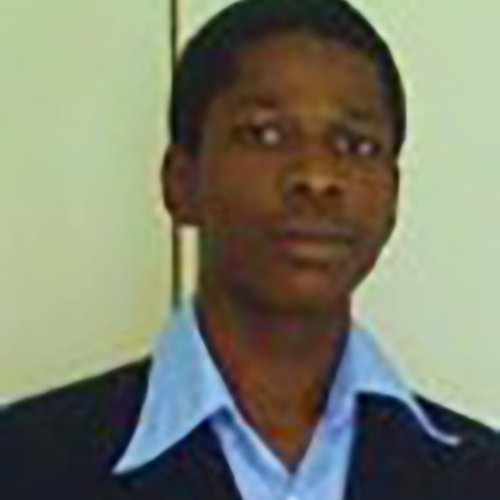 |
Joseph Aboki ’12Chemical Engineering Advisor: Paula Hammond, Chemical EngineeringSponsor: Anonymous private donor Electrostatic assembly methods to design functional membranes for photoelectrochemical cells Widespread adoption of solar energy will require more efficient and economical storage methods to ensure a constant power supply. A proposed method of tackling this problem is by developing a solar‐powered water‐splitting device to convert solar energy directly into chemical energy (H2). The proposed wireless device will require the development of mixed ion and electron conducting thin polymer membranes. The Hammond lab has used layer‐by‐layer (LbL) electrostatic self‐assembly to generate polymer composite membranes for methanol fuel cells that exhibit high protonic conductivities. Based on this success, this UROP will focus on using LbL assembly of an anionic proton‐conducting polymer with a variety of cationic electron‐conducting polymers to develop mixed conducting polymer composite membranes. We will test the properties of these membranes using Scanning Electron Microscopy, profilometry, 4‐point probe, electrochemical impedance, spectroscopy, and FTIR. In addition, we will also study how surface‐wetting properties affect bridging when assembling spray LbL films on microwire arrays. |
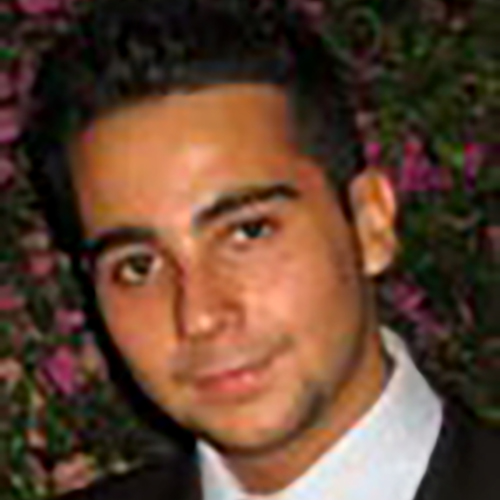 |
Ragheb El Khaja ’12Biological Engineering Advisor: Kimberly Hamad‐Schifferli, Mechanical EngineeringSponsor: BP Synthesis and optimization of transition metal nanoparticles for Lithium‐air fuel cell catalysis The goal of this research project is the development of transition metal oxide nanoparticles for catalysis in Lithium‐air batteries. Li‐air batteries would be significantly more compact and lightweight than current battery technologies since they halve the need for chemicals by making use of available air at the cathode as opposed to having to contain the needed chemicals. However, methods of efficient synthesis of transition metal oxides’ nanoparticles have not been thoroughly studied. The project’s objective is to study the effects of variations in the quantities of reactants and techniques of synthesis of transition metal oxides’ nanoparticles on the size, magnetic properties, and catalytic strength of the nanoparticles. The development of such nanoparticles would facilitate the development and mass production of Li‐air batteries, which would be beneficial for storing energy from alternative sources such as solar and wind. |
 |
Jared Forman ’13Chemistry Advisor: Michael Strano, Chemical EngineeringSponsor: BP Investigation of graphene for application of chemically driven thermopower waves The Strano Research Group at MIT has recently discovered how to use carbon nanotubes as thermal conduits for creating high power, chemically driven thermopower waves. We will be working to improve the efficiency and power of these waves by manipulating different variables in regard to the nanotubes and fuels based on measurements of temperature, voltage, and reaction speed. Also, by experimenting with the creation and manipulation of thermopower waves across graphene, we will carry out a comparative investigation between one‐dimensional thermal materials (nanotubes) and two‐dimensional materials (graphene) as conduits to produce thermopower waves as a source of energy. In the future, these thermoelectric power waves have potential for ultra‐high power density batteries and fuel cells. |
 |
Erick Fuentes ’11Aeronautics and Astronautics Advisor: Alexander Slocum, Mechanical EngineeringSponsor: Natalie Givans ‘74 Interfacing modern car computer systems with an electric vehicle conversion The Electric Vehicle Team (EVT) at MIT has converted a Mercury Milan, donated by Ford, into an electric vehicle. This project, known as elEVen, aims to obtain a 200 mile range and an 11 minute full recharge. The EVT must interface with the car’s computer so that measurements of the car’s state—voltages and currents seen by each component, the torque provided by the motor, and the temperature of various components—can be made. My responsibilities in this project are to interface with the car’s computer, to make aerodynamic improvements to the chassis, and if time permits, to implement a seamless braking system that integrates both electric and hydraulic braking. This will involve coding in C, running data analysis in MATLAB, and using Solidworks to model the car and simulate flow conditions from which drag improvements can be tested and ultimately machined and fitted to the car. Working on the EVT provides a unique opportunity for me to apply the subject material that I have learned in my aerodynamics and control theory classes in a real world setting. |
 |
Jennifer Hammond ’12Mechanical Engineering Advisor: Alexander Slocum, Mechanical EngineeringSponsor: MIT Energy Initiative Easily built concentrated solar power structures In Africa, many families work all day to support themselves and only cook during the night when work cannot be done. It is up to the young daughters to gather firewood during the day—unsupervised—which poses a danger to their overall safety. In addition, cooking takes place inside tents with no openings for the smoke to escape and the women are forced to breathe in that air, causing health problems that can easily be avoided. Our project is to create a solar heated cook top. During the day, our mechanism will concentrate the sun’s light through a Fresnel lens on to a covered pot with lithium nitrate inside. It will be designed to move autonomously with the sun and store enough heat to boil 15 liters of water. This device would greatly benefit many families and reduce the safety and health risks of their day-to-day lives. Our main objective with this project is to build our own Fresnel lens from a transparent thermoplastic and determine the best clock mechanism to move the solar cooker with the sun. |
 |
Julie Harrow ’12Civil and Environmental Engineering Advisor: Herbert Einstein, Civil and Environmental EngineeringSponsor: BP Rock fracture experiments in enhanced geothermal systems Enhanced geothermal systems (EGS) involve circulating water through fractured rock of high temperatures. The heated water is then run through heat exchangers to produce steam‐driving turbines for electricity production—this co‐generation process is implemented to use some of the heat directly for other purposes, such as space heating. The success of EGS depends upon an understanding of deep drilling, fracturing of rock, and mineralization. This UROP investigates rock, specifically granite, fracture experiments for enhanced geothermal systems. Granite is one of the most promising host rocks for EGS and it involves quite complex cracking processes. Therefore, crack initiation, propagation, and coalescence processes must be studied in detail. This involves observation of the cracking process with a high-speed camera, which allows one to distinguish different types (shear, tension) of cracking. |
 |
Clarion Hess ’12Earth, Atmospheric and Planetary Sciences Advisor: Alison Malcolm, Earth, Atmospheric and Planetary SciencesSponsor: BP Double‐difference tomography for characterization of internal structure of an enhanced geothermal reservoir: Application to the perceptible earthquake problem Enhanced geothermal systems (EGS) are a promising technology for greatly expanding the use of geothermal energy beyond regions where natural geothermal reservoirs exist. EGS reservoirs are constructed through hydraulic fracturing, which involves the high‐pressure injection of water to create a localized fracture system through which water can be circulated to extract heat and which can induce earthquakes. While a majority of the earthquakes have been small, a number of recent EGS projects have caused earthquakes that can be felt at the surface, raising concerns about potential damage to surface structures including geothermal power plants. This UROP will use the results of a tomographic study to investigate the relationship between the 3‐dimensional velocity structure and the spatial distribution of the seismic energy release. Understanding this relationship will improve evaluations of when and where perceptible earthquakes are likely to occur, which would greatly improve the future prospects for EGS developments. |
 |
Angela Hojnacki ’12Mechanical Engineering, Urban Studies and Planning Advisor: William Green, Chemical EngineeringSponsor: MIT Energy Initiative (Campus Sustainability project) Optimizing catalyst use and methanol recovery for biodiesel processing Biodiesel@MIT is a group of students and administrators that has been working since October 2006 to bring a biodiesel processor and system to MIT’s campus. Converting used vegetable oil collected from the Student Center, and recently passing American Society for Testing and Materials (ASTM) standards, the group produces biodiesel in NW14‐1326 to run in the Tech Shuttles. The conversion requires filtration to remove food and dirt particles from the oil, and a transesterification process using methoxide (methanol and potassium hydroxide), heat, and a base catalyst. Our goal this summer is to increase the efficiency, reliability, and yield of the processor while maintaining the quality of the fuel produced. We will achieve this by testing the optimal amount of catalyst needed, refining the titration used to determine the amounts of reactants, attempting methanol recovery on glycerol, and exploring alternatives to the water wash we use to purify the biodiesel. |
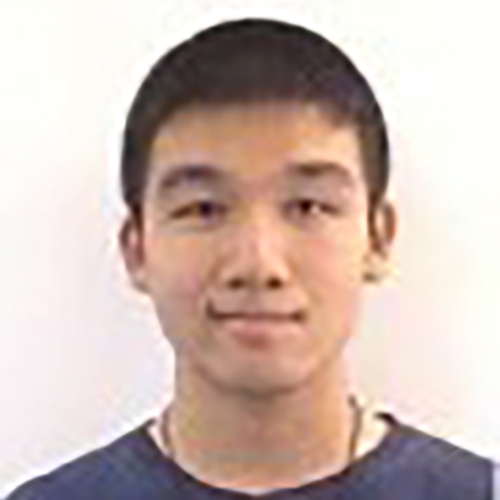 |
Jeffrey Huang ’12Mechanical Engineering Advisor: Dick Yue, Mechanical and Ocean EngineeringSponsor: George Thompson, Jr. ’53 Ocean wave energy: Leading design analysis As far as alternative energies go, oceanic wave energy is currently at the state in its development that wind energy was at 25 years ago—that is, promising, but largely undeveloped. As such, analyses on a few leading designs is a necessary step to making the designs of wave energy conversion devices more unified and universal. The goal of this project is to look into two current designs: the “point absorber” and the “surge wave energy converter.” Specific questions that will be looked into include the power required for maintenance, the power generated, and the short and long term environmental impact these designs may have. Furthermore, a graphical user interface will be developed to compare design effectiveness at different global locations. |
 |
Faith Keza ’13Electrical Engineering and Computer Science Advisor: Jean‐François Hamel, Chemical EngineeringSponsor: BP Integrated process for the liquefaction and saccharification of Milo sorghum Ethanol is a biofuel. Biofuels are widely considered a way to reduce greenhouse gases from fossil fuel use and thereby reduce human‐caused global warming. My research this summer is therefore going to look at how the process of the production of ethanol from sorghum, a cereal crop, can be developed so as to increase the yield of the biofuel. The general process follows in the order: milling, pretreatment (enzymatic hydrolysis using alpha‐amylase and glucoamylase in a two‐step process), filtration, then lastly fermentation of the hydrolysate to produce ethanol. The primary goal of my research is therefore to integrate the liquefaction (hydrolysis with alpha‐amylase) and saccharification (hydrolysis with glucoamylase) bioprocess design for the pretreatment process. I plan to accomplish this by finding the optimum conditions for both reactions separately and then using the results to find the optimum conditions for the integrated processes by finding the appropriate median range. I will then test the ethanol content of the product from the fermentation of the hydrolysate of the integrated process under different conditions using the YSI Biochemical Analyzer. |
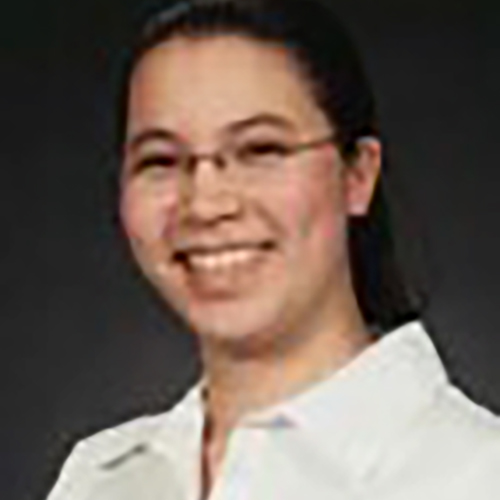 |
Rebecca Krentz‐Wee ’12Nuclear Science and Engineering Advisor: Mujid Kazimi, Nuclear Science and EngineeringSponsor: BP Nuclear energy for low‐carbon oil recovery and peak electricity This project is to conduct an initial investigation into the technical and economic viability of converting a heavy oil reservoir into a gigawatt‐year heat storage system for a nuclear‐geothermal peak electricity system. It will build upon the work of a current graduate student which developed the nuclear‐geothermal peak electricity production concept. At times of low electricity demand, heat from a nuclear reactor is used to heat underground rock. At times of high electricity demand, the reactor produces electricity and the manmade hot‐rock heat source is used with a geothermal power plant to produce peak electricity. Because of the heavy oil production, the starting reservoir has been heated to high temperatures, which implies that the heat losses should be small if converted into a large heat‐storage system. Specifically, I will be researching California heavy oil fields, analyzing heat loss and fluid pressure drops in the oil field, and define options to remove oil from hot water being sent to a geothermal power plant. |
 |
Erica Little ’11Chemical Engineering Advisor: Gregory Stephanopoulos, Chemical EngineeringSponsor: BP Optimizing biofuel production in bioreactors In this UROP, I shall be working on a variety of projects concerning optimizing and scaling up biofuel production using genetically‐engineered microorganisms. My studies will initially involve developing proficiency in setting up and operating the Bioinformatics and Metabolic Engineering Laboratory’s many bioreactors, as well as genetically engineering microorganisms such as E. coli and S. cerevisiae. One of the major goals of my research will be to maximize the production of oil in a yeast strain whose metabolism has been re‐engineered to replicate clinical obesity in humans by testing different reactor configurations, medium formulations, and feeding regimes. One of the principal designs that I will be testing is a continuously‐stirred biphasic bioreactor comprising of an aqueous phase that harbors the oil‐secreting yeast cells and an organic phase for extracting the oil once it has been produced in the aqueous phase. This particular design is distinct from conventional emulsion‐based reactors, and offers several benefits. Different methods to extricate the oil from the yeast cells will be evaluated, and alternatives to scale up the entire production‐extraction process shall also be investigated. |
 |
Katharine Luginbuhl ’12Mechanical Engineering Advisor: Anette Hosoi, Mechanical EngineeringSponsor: Alfred Thomas Guertin ‘60 Increasing the efficiency of deep‐sea exploration for fossil fuel and geothermal energy By studying how plant roots grow, it may be possible to develop a more energy-efficient biomechanical digging system. This UROP uses birefrigent photoelastic particles to track the forces in a system, and study how the plant roots grow through these systems. Through image processing, it will be possible to determine the forces the plant roots undergo as they grow through the system. This will be compared to less responsive diggers, such as flexible and nonflexible rods. Using the knowledge gained from the plants, we will attempt to design a new, more efficient process for digging through materials with uneven force distributions, such as soil or rubble. |
 |
Perry Nga ’12Chemical Engineering Advisor: Jean‐François Hamel, Chemical EngineeringSponsor: BP Production of bioethanol from sorghum forage This summer, I will be researching the production of bioethanol from sorghum forage bagasse. I will seek to maximize the yield of the bioethanol product and analyze the effects of varying pretreatment conditions and fermentation environments. Furthermore, I will analyze the samples to better understand the composition of the treated bagasse and the efficiency of the yeast to ferment the different carbohydrate monomers. Previous research in one of Professor Hamel’s labs provides insight into the optimal pretreatment conditions and fermentation environment for sugarcane bagasse. By using this data, I will have a good starting point for sorghum forage. I expect to find out the effect of acid concentration, temperature, and residence time on batch pretreatment processes of sorghum forage by the end of the summer. I also hope to understand what the optimal environment and yeast strain would be by analyzing the composition of the samples. |
 |
Benjamin Nield ’12Physics Advisor: Peter Fisher, PhysicsSponsor: Anonymous private donor Potential of one dimensional gas confinement in carbon nanotubes leading to fusion With abundant fuel sources, low environmental impact, and without the need for uranium or plutonium, fusion is a promising energy source for the future. Fusion occurs when, through high pressures and temperatures, two hydrogen atoms are pushed together with enough force to overcome the Coulomb barrier between them. Because high density is so important, ways to contain the reactants are desirable. Carbon nanotubes show promise in the area of confinement since they are tubes with a diameter effectively equal to the diameter of a hydrogen atom. Once in a nanotube, the atoms are essentially confined to motion in one dimension and so, when heated, are more likely to collide and fuse. In the experiment, Deuterium will be introduced into the carbon nanotubes and a microwave magnetron will bombard the nanotube, heating and ionizing the Deuterium. Since they are confined by the nanotubes, they will collide and fuse. The reaction will produce helium and a neutron which will then encounter a detector indicating whether fusion has taken place in the tube. |
 |
Tian Ong ’11Chemical Engineering Advisor: Jean‐François Hamel, Chemical EngineeringSponsor: BP Production of bioethanol from algae Energy research has become more important over the years, as the supply of oil and fossil fuels have diminished and as the environment continues to suffer from the effects of our lifestyles. Research in alternative fuels has increased and led to bioethanol, primarily those made from biomass, as an alternative fuel source. This project will center on bioethanol production from Ulva rigida, an algae that can be fermented by microorganisms to produce ethanol. The focuses of this project include the conversion of cellulosic materials into biofuels and the study of pre-treatment methods for Ulva rigida, with an analysis of its sugar components. My role will be to build upon completed research, to perform acid hydrolysis on samples of Ulva rigida with sulfuric acid, while varying the concentration and temperature of the hydrolysis, to identify and confirm the best microorganism to use for fermentation, and to determine the optimal conditions for pre‐treatment. |
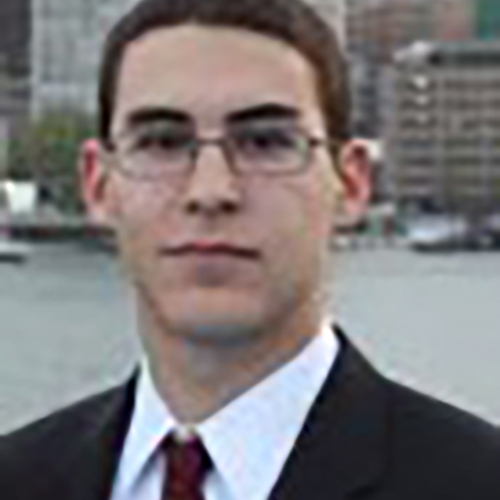 |
Alex Teuffer ’13Mechanical Engineering Advisor: Una‐May O’Reilly, Electrical Engineering and Computer ScienceSponsor: William Chao ‘78 Performance issues of small wind turbines Small wind turbines are defined as systems that produce less than 10kW of power. The focus of my UROP will be to work with the EvoDesignOpt Group to propose solutions to increase the performance of small wind projects in Massachusetts. According to the CADMUS report of November 2008, no installer or turbine model is meeting its energy‐production target and the state‐assisted small wind projects are severely underperforming: only 29% of the predicted energy production estimated during the installers’ resource assessment phase is being produced. In this project we will analyze data from multiple small wind turbines (we have acquired data from the small wind turbines installed on the roof of the Boston Museum of Science) and attempt to further expand the explanations for these losses in energy production and propose solutions to mitigate some of these losses. |
 |
BJ Thompson ’10Electrical Engineering and Computer Science Advisor: Sheila Kennedy, ArchitectureSponsor: MIT Energy Initiative (Internship) Portable light and power initiative in Haiti The Portable Light Project creates new ways to deliver de‐centralized renewable power and light to the developing world. Portable Light integrates lightweight and rugged flexible photovoltaics (solar panels) and energy efficient solid state lighting in a simple, versatile textile form that can be adapted to local cultures and customized by people using traditional weaving and sewing technologies in an open source model. A Portable Light 2 watt solar textile harvests electrical energy from sunlight for five&ndashsix hours and provides more than eight hours of bright, white light to support community-based education, medical services, and small business enterprises. Portable Light solar textiles provide individuals and their families with the benefits of renewable light, extending the hours of useful time and providing unprecedented opportunities to study and work at home. I will be working on the circuitry of the light and improving the existing power delivery and overall efficiency of the project. |
 |
Sebastian Velez ’12Chemical Engineering Advisor: Jean‐François Hamel, Chemical EngineeringSponsor: BP Ethanol production from ligno‐cellulosic feedstock and lignin determination Extracting the fermentable sugars from the lignocellulose materials (e.g., sugarcane bagasse) has proven to be a major barrier to ethanol production. Previous work shows an intriguingly high level of sugars in a hydrolysate produced from the pre-treatment of sugarcane bagasse. These experiments will be repeated and if the original finding is confirmed, it will allow us to design a novel pre‐treatment process. Fourier transform infrared spectroscopy (FT‐IR) will be employed to implement an assay for lignin. Infrared spectroscopy has the potential to produce qualitative and quantitiative analytical data for samples with minimum sample preparation. We will examine the effect of lignin concentration present in a hyrolysate of sugarcane bagasse on yeast fermentation, specifically on cell growth kinetics and ethanol production. With all this information we will design a new pre‐treatment that minimizes the release of lignin into the hydrolysate, while maximizing the production of sugars. |
 |
Michael Walsh ’13Physics, Electrical Engineering and Computer Science Advisor: Michael Strano, Chemical EngineeringSponsor: BP Chemically driven carbon nano‐structure thermopower waves Excessive resource consumption in developed countries is an established reality—a reality that has created a world‐wide energy crisis. The problem of limited, non-sustainable energy sources represents a challenge to scientists and engineers; the challenge is to discover better and more efficient ways to extract usable energy from limited resources. The unique conductive properties of carbon nanotubes have proven to effectively guide thermal waves through a fuel source. By rolling bundles of these carbon nanotubes into a yarn and coating that yarn with a fuel, an ignition system can be used to initiate a thermal wave that travels the length of the nanotube. The heat variation creates a voltage difference across the terminals of the nanotube. This thermal power source may very well lead to the development of a whole new contained power source—batteries that can be miniaturized and retain their same power output. |
 |
Sharon Xu ’13Architecture Advisor: Stephen Connors, MIT Energy InitiativeSponsor: Mohave Sun Power/Mitchell Dong (Campus Sustainability project) Development of a campus wind resource monitoring network In the springs of 2007 and 2010, MIT offered a campus energy project course where teams of students measured wind speeds at select locations on campus and used that information to provide insight on potential applications of wind power on campus. In these two projects, data were only collected for a limited time and at a limited number of locations. Given the seasonal variation of wind resources and the microclimate impact on an urban wind turbine’s performance, those short‐term data do not provide sufficient information for such wind power projects. Thus, this study focuses on designing and implementing a more robust, long‐term wind speed monitoring system by building upon existing local meteorological monitoring systems, with the intent to provide a better foundation of data for future campus energy activities. This will include evaluating various wind measurement systems, identifying candidate locations on campus for building‐integrated wind turbines, and implementing wind monitoring systems. |
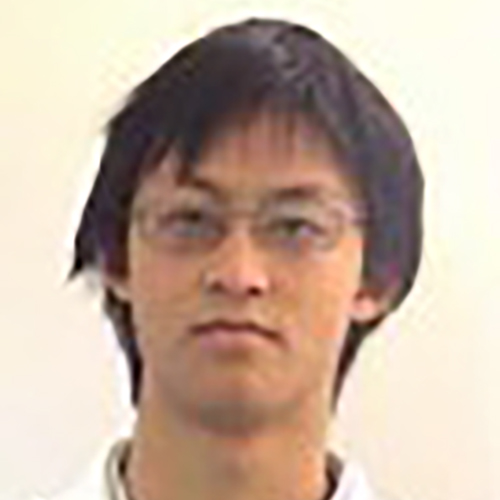 |
Allen Yin ’11Electrical Engineering and Computer Science Advisor: Marc Baldo, Electrical Engineering and Computer ScienceSponsor: William Chao ‘78 A solar powered lasing solar concentrator Organic solar concentrators (OSCs) are organic dyes deposited as thin films on glass, which can absorb and re‐emit light in certain waveguide modes than can then be absorbed by photovoltaic (PV) cells. This project explores the non‐linear optical properties in OSCs and seeks to construct a solar‐powered laser operating on these principles. The desired lasing solar concentrators (LSCs) are expected to have record efficiency in converting light to electricity. LSCs are essentially solar‐pumped lasers, which, due to the low intensity of the solar flux, need to possess a high quality factor. Currently, high Q lasers are limited by their pumping technique that requires resonant pumping by a second high Q laser. This project aims to utilize a new pumping technique for high Q lasers by converting incoherent to coherent light based on cascaded energy transfer. |
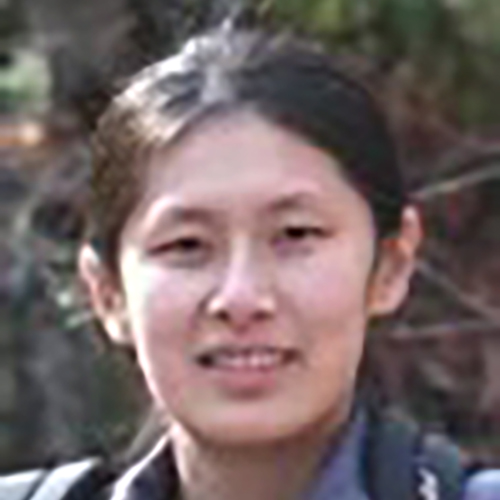 |
Wenting Zheng ’13Electrical Engineering and Computer Science Advisor: Anantha Chandrakasan, Electrical Engineering and Computer ScienceSponsor: Osaka Gas Efficiently powering medical devices by maximizing vibrational energy harvester power There are many challenges in applying technologies to the biomedical field, and one of them is finding a way to efficiently power medical devices. It is important to keep a continuous, long-term power supply, both for patients’ convenience and for emergencies that may occur. Therefore, a good goal when designing medical equipment is to keep device power consumption as low as possible while still making it accessible for daily use. There are different ways of maintaining functional low-power circuits, and for this research project I will be investigating piezoelectric energy harvesters. This type of energy harvesting uses vibration from surrounding areas to power devices. During the summer my project will be an extension of the work I completed in the past spring semester. Modeling the energy harvester as a circuit, I can impedance‐match the device using external circuits and analyze its behaviors. The goal is to find out how to maximize power output under different conditions, using both the harvester’s inherent characteristics and external circuits. |